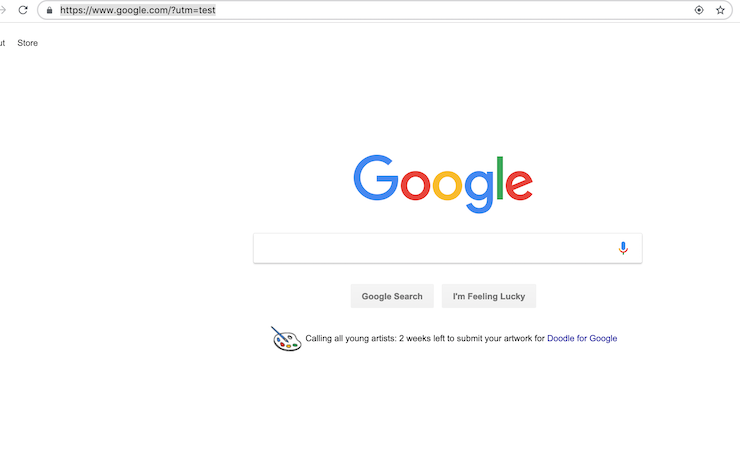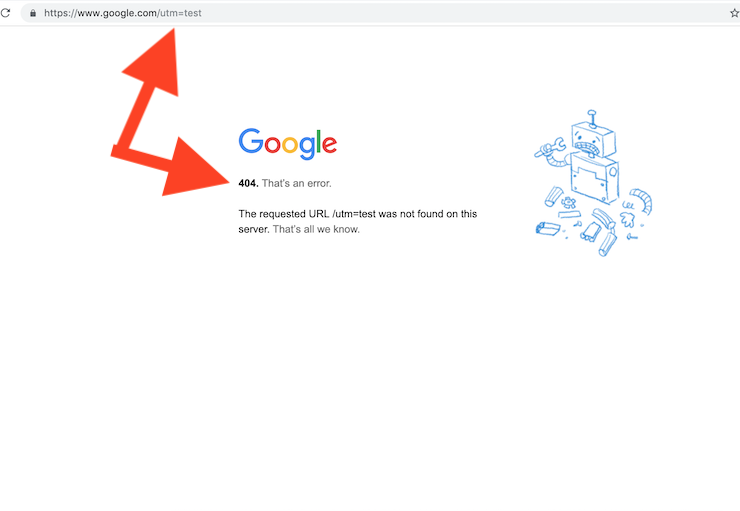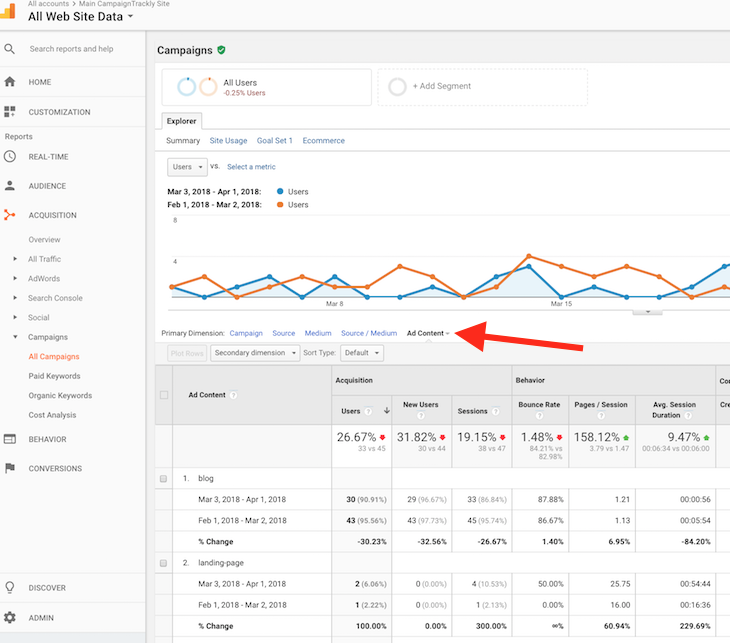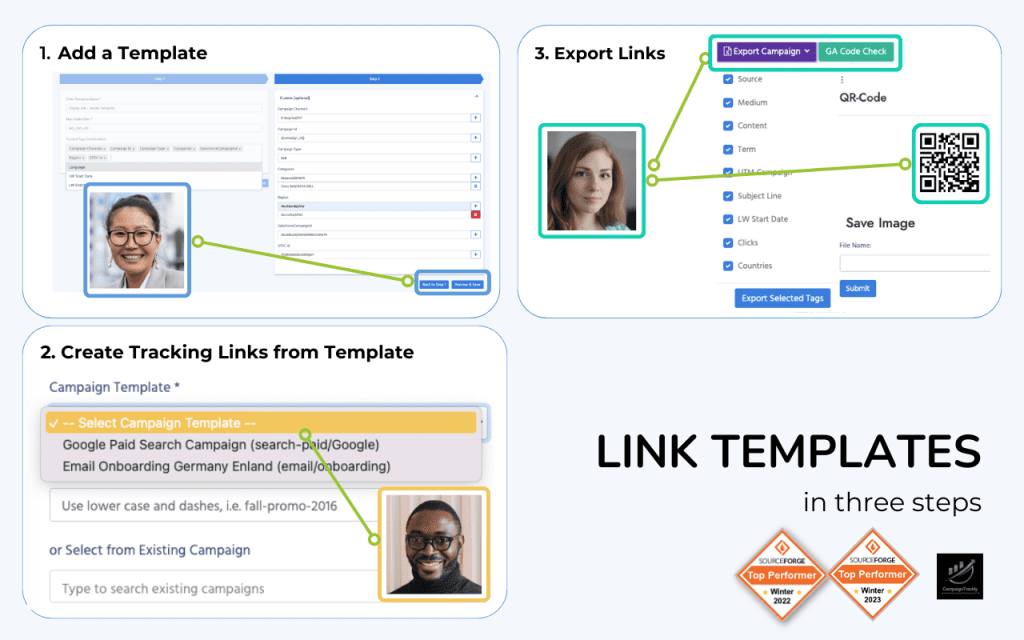Google Analytics Campaign UTM Parameters refer to the tags that you add at the end of your web page or blog post web address, in order to track how your targeted audiences engage with them.
How do you add Google Analytics Campaign UTM Parameters?
Every page on the web has a URL address – it can start with “http://www” or “https://”. What you probably don’t know is that if you add a “?” at the end of the web-page’s address, you can add words or code, referred to by technical people as “query strings”, which, if applied correctly, will provide Google Analytics with additional reporting details.
These details will enable Google Analytics to give you much more in-depth information about the pieces you are promoting and their performance.
Things to remember:
- Google Analytics does not create these UTM tracking codes for your digital campaigns. You need to create them manually or using an automated tracking link building tool.
- Google Analytics will automatically track your Google Ads – so at least you are saving some work there, yay!
- You should not be adding UTM tags when you link pages from the same website. Only tag incoming traffic from external sources like email, social, affiliates, etc.
First, let me show you how you can add these “query strings” or UTM parameters. Let’s run an experiment:
- Let’s go to https://www.google.com. Google will automatically add this character at the end”/”.
- Now let’s add at the end of the URL address, after the “/”, this code: ?utm=test
- Now the address should look like “https://www.google.com/?utm=test”
- Let’s copy this address and paste it in a new window – as you will see, nothing will change and you will still land on the same page you were before, even though you made changes to the URL.

5. Let’s run the same experiment, without adding the “?” in front of “utm=test”- what will happen? We will get a broken page.

So, as a recap…
If we use a “?” at the end of the address of any web page or blog post, and add certain words or code – if done correctly – that will not only not break your website address, it will also provide Google Analytics with extra tracking info, which you can use to track the performance of your campaigns.
This activity will prevent you from wasting money on badly performing promotional channels and can also sometimes help you identify new audiences and new customer behaviors that can enable you to drive more leads and business.
How to Add Google Custom Campaign UTM Parameters to Your Links
Google recognizes five standard UTM parameters or tags – campaign, source, medium, content, and term. This way, marketers can split and compare traffic and engagement by:
- Campaign name (campaign), where you can give your campaign whatever name you desire. You always add it to your link in the following way: utm_campaign=”Name Your Campaign”
- Website from where traffic originated (source), where you usually spell the full name of the website, like twitter.com. The way you coded it is as follows: utm_source=”EnterYourSource.com”
- Traffic type or digital channel (medium), where you usually segment your traffic into social-organic, social-paid, email, display paid, etc., so you can compare which channel was the most successful one. The correct code to use for this one is: utm_medium=”EnterTheMediumHere”.
- Content type (content), where you can compare blogs versus landing pages. You need to use utm_content=”Enter Content Type”
- Term – used to track several versions of the same ad, several keywords associated with the same ad, several versions of the same link in email (hero image versus button versus text link), etc. The way to track term UTMs is to use utm_term=”Enter Your Term”
You can find a much more detailed explanation about these Google Analytics parameters here.
To ensure its platform knows how to track these tags properly, Google requires that you always add “utm_” in your web address when adding your tracking query string parameters.
- If you mistype the UTM, or enter it in an incorrect format, either your link will break or you won’t receive the reports you are looking for.
So, you can see how if you want to manually build a link that has some or all of the above parameters or tags, it becomes a bit burdensome.
Not only do you have to remember the right formatting, but you will also have to be careful not to swap medium with term or source, you need to remember how you name all your campaigns, so you don’t duplicate names by accident, and more.
Since UTM tagging is part of link management, which is becoming more and more important in digital marketing, many marketers today use campaign URL builder tools – to eliminate errors while setting up the parameters and to save time.
Simple URL builders are usually static and require a lot of typing. Automated URL builders, have multiple features and ensure consistency of tagging, minimal occurence of UTM mistakes, and more.

Which campaign parameter is not standard in Google Analytics
Google Analytics gives you the option to create custom campaign tracking parameters – if you are using the free Universal Analytics platform, you will have the option to create up to 20 “custom dimensions“ – you name them, you identify what they track, you get all the benefits of granular insights.
Custom Dimension Example
- For example, if you want to clump certain digital marketing campaigns into groups, based on geographic region, you can create a custom dimension called utm_region.
- As long as you always add this custom parameter to all your digital tracking links, at the end of your reporting quarter or year, you will be able to report your success by region.
- You can create campaign category” to group campaigns by Brand or by Business unit – again so that you can roll up campaign reporting into bigger buckets for higher level review and segmentation.








